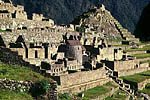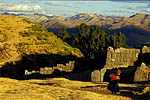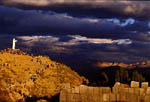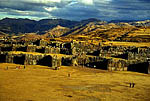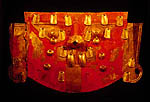![]()
Legacy of the Incas
Machu Picchu Luxury Tours
Peru:
Machu Picchu - Lake Titicaca
(11 days/10 nights)
Machu Picchu Luxury Tours
Peru:
Machu Picchu - Lake Titicaca
(12 days/11 nights)
Empire of the Sun
Machu Picchu Luxury Tours
Peru:
Machu Picchu - Lake Titicaca
(14 days/13 nights)
Ancient Civilizations of Peru
Machu Picchu Luxury Tours
Peru:
Colca Canyon - Machu Picchu
Lake Titicaca
(16 days/15 nights)
Archaeological & Ecological
Treasures
Machu Picchu Luxury Tours
Peru & Ecuador:
Galapagos - Machu Picchu
Lake Titicaca (or Amazon)
(18 days/17 nights)
Grand Tour of the Inca Empire
Machu Picchu Luxury Tours
Peru:
Colca Canyon - Amazon
Machu Picchu- Lake Titicaca
(22 days/21 nights)
Ancient & Colonial Capitals
Machu Picchu Luxury Tours
Peru:
Machu Picchu
(10 days/9 nights)
Inca Trail to Machu Picchu
Machu Picchu Luxury Tours
Peru:
Machu Picchu
(13 days/12 nights)
Machu Picchu & Galapagos
Machu Picchu Luxury Tours
Peru & Ecuador:
Machu Picchu - Galapagos
(15 days/14 nights)
Galapagos & Machu Picchus
Machu Picchu Luxury Tours
Ecuador & Peru:
Galapagos - Machu Picchu
(18 days/17 nights)
Enchanted Isles of the Galapagos
Machu Picchu Luxury Tours
Ecuador:
Galapagos
(11 days/10 nights)
Galapagos & the Kingdom of Quito
Machu Picchu Luxury Tours
Ecuador:
Galapagos - Andes
(16 days/15 nights)
Galapagos & the Amazon
Machu Picchu Luxury Tours
Ecuador:
Galapagos - Amazon
(16 days/15 nights)
Historic Haciendas of the Andes
Machu Picchu Luxury Tours
Ecuador:
Cotopaxi - Antisana - Otavalo
(7 days/6 nights)
© 2013 Inka's Empire Corporation.
All rights reserved.
![]()
Pre-Departure Information
Luxury Galapagos Cruises
Typical 7-night itinerary, Galapagos Islands.
Map: Quasar Expeditions. Luxury Galapagos Cruises.
Climate
The climate of the Galapagos Islands is subtropical; even though these islands are located around the Equator, the climate is far from being excessively hot. It is regulated by the cold "Humboldt" current and the warm "El Niño" current, creating microclimates on the islands influencing the particular flora and fauna habitats found on each island.
The weather varies from season to season. June through December is known as the dry (garua) season. The strong Antarctic Humboldt Current, coming from the south, affects the climate at this time of year. When the winds blow in a northwestern direction, the islands are bathed in cool waters, cooling the air and creating unusually cold conditions for equatorial islands.
From the end of December through May is considered the "hot" or "wet" season. The southeast trade winds diminish in strength and warmer water from "El Niño" current flow through the islands. During this season, the Galapagos' climate is more tropical with daily rain and cloudier skies. Also, the ocean temperature is warmer for swimming and snorkeling.
What to bring
In brief, guests should bring summer clothing, with a jacket or sweater, in a soft bag for easy stowage. Also essential are comfortable walking shoes, sandals, a hat, bathing suit, sun protection lotion, insect repellent, binoculars, a camera and plenty of film.
It's always a good idea to travel light by bringing only what you need for your trip. Keep in mind that flights to and from the Galapagos limit you to a maximum of 20 kg or 44 lbs. This allowance should be more than enough for what you will need to bring. Any excess items, including dressier attire for your nights out in Quito, can be left at your hotel there.
Small, waterproof backpack
Comfortable walking shoes
Sneakers with rubber soles
Shorts
Long pants
T-shirts
Long- and short-sleeved shirts
Wind breaker
Bathing suit
Socks
Underwear
Hat or cap
Toilette kit with biodegradable shampoo
Sun block
Sunglasses
Binoculars
Camera and camcorder
Extra film or memory chips
Extra batteries (US-standard electrical current and outlets are available for recharging)
Any medicine you may be taking
Motion sickness medication for those not accustomed to boating.
Insect repellent: TheraNeem Leaf & Oil Herbal Outdoor Spray by Organix South, Inc. and similar natural products are recommended.
Collapsible walking stick, if you think you might have difficulty keeping your balance on rocky trails.
The book you've been meaning to read for so long or the Voyage of the Beagle by Charles Darwin.
Notebook
Questions & answers
Q: Where are the Galapagos Islands?
A: The Galapagos Islands (or Archipelago de Colon) is a Province of Ecuador located 600 miles (1000 kilometers) west of the Ecuadorian coast. They lie directly on the equator.
Q: How do we get there?
A: From North America and Europe, there are daily flights to Quito and Guayaquil, Ecuador. From those cities, there are departures each morning to the Galapagos islands of Baltra and San Cristóbal.
Q: May we fly to the Galapagos from Quito and just back to Guayaquil (or vice versa)?
A: Yes, we would be able to arrange that for you.
Q: What is included in the rate for the boats?
A: The rate includes accommodations and all meals aboard the boat, island sightseeing, all guide and lecture services, transfers in the islands and between the airport and yacht in Galapagos.
Q: What is not included?
A: The entrance fee into the Galapagos National Park ($100 per person), tips (it is customary to tip the guide and crew), soft drinks, alcoholic beverages and any other items not specifically mentioned as being included. There is also a $25 departure tax from Ecuador on all international flights. It must be paid directly by the passenger at the airport.
Q: How much should we tip the guide and crew?
A: Suggestions are per group of two people, not per person. A good tip is $10 per day to your guide and $20 per day to the crew (including the chef). Any tip should be given at the end of the cruise.
Q: What level of naturalist guide will be aboard the boat and do they speak English?
A: All of the boats we use employ highly experienced and qualified level III naturalist guides who are fluent in English (and often in other languages as well).
Q: Will there be time for snorkeling?
A: There is plenty of time for snorkeling for those who are interested.
Q: Is there a rental charge for snorkeling equipment?
A: Snorkeling gear is available on each yacht for a moderate rental fee, which must be paid directly by the guest. However, for the best fit, we recommend that you bring your own mask and snorkel.
Q: Is a wetsuit necessary for snorkeling?
A: A wetsuit makes it more pleasant to swim in the cool water during the months of June through November but isn't needed from December through May. For snorkeling in the Galapagos, a 3 mm "shortie" (which covers only the torso) is advisable. For the best fit, bring your own. Otherwise, ask us to reserve one for you. Provide your height, weight and clothing size (small, medium, medium-large, large, X-large, XX-large or XXX-large). There is a moderate deposit and rental fee, which must be paid directly by the guest.
Reference for experienced snorkelers:
Fareneheit water temperatures are January: 71 - 74, February: 72 - 75, March: 71 - 74, April: 70 - 75, May: 69 - 74, June: 65 - 73, July: 63 - 70, August: 62 - 66, September: 59 - 67, October: 62 - 70, November: 65 - 71 and December: 66 -72.
Celsius water temperatures are January: 22 - 23, February: 22 - 24, March: 22 - 23, April: 21 - 24, May: 21 - 23, June: 18 - 23, July: 17 - 21, August: 17 - 19, September: 15 - 19, October: 17 - 21, November: 18 - 22 and December: 19 -22.
Q: How much luggage can I bring to the Galapagos?
A: Free baggage allowance is 20 kilos (44 pounds) per person. In addition, each passenger is allowed a carry-on and a camera. Any excess weight will be billed additionally by the airline at about $4 per kilo ($2 per pound). If you are returning to Quito, you can avoid such fees by leaving extra baggage at your hotel.
Q: Will we have to exchange any money before we travel to Ecuador or once in the country?
A: Not if you have US dollars. Ecuador has adopted the US dollar as its nationals currency.
Q: We were supposed to have one large bed, but there are two small ones in our cabin. What should we do?
A: Most yacht operators join two smaller beds together to create one larger bed. If that hasn't been done in your cabin, please inform any member of the crew.
© 2013 Inka's Empire Corporation, Machu Picchu Luxury Tours. All rights reserved.
